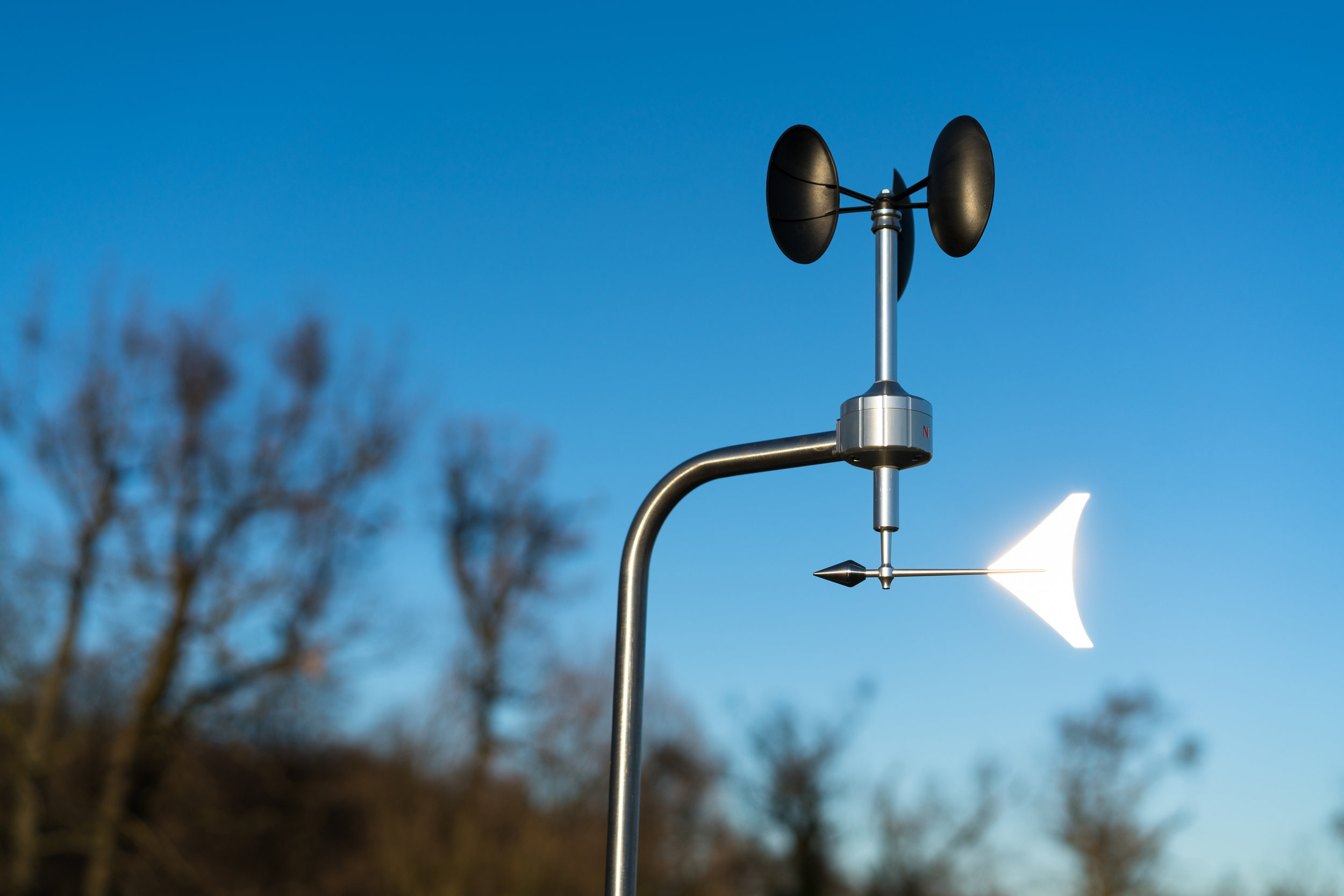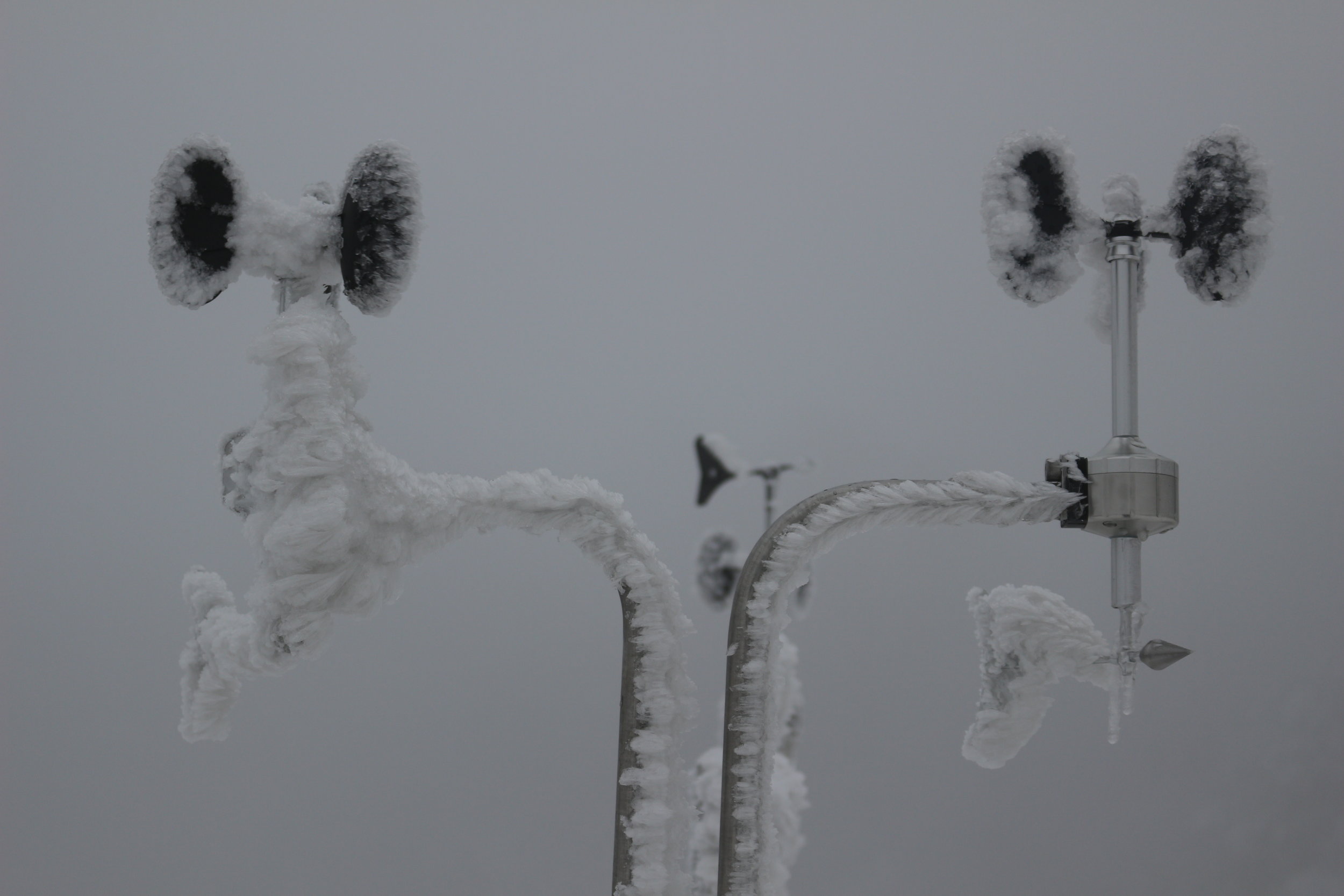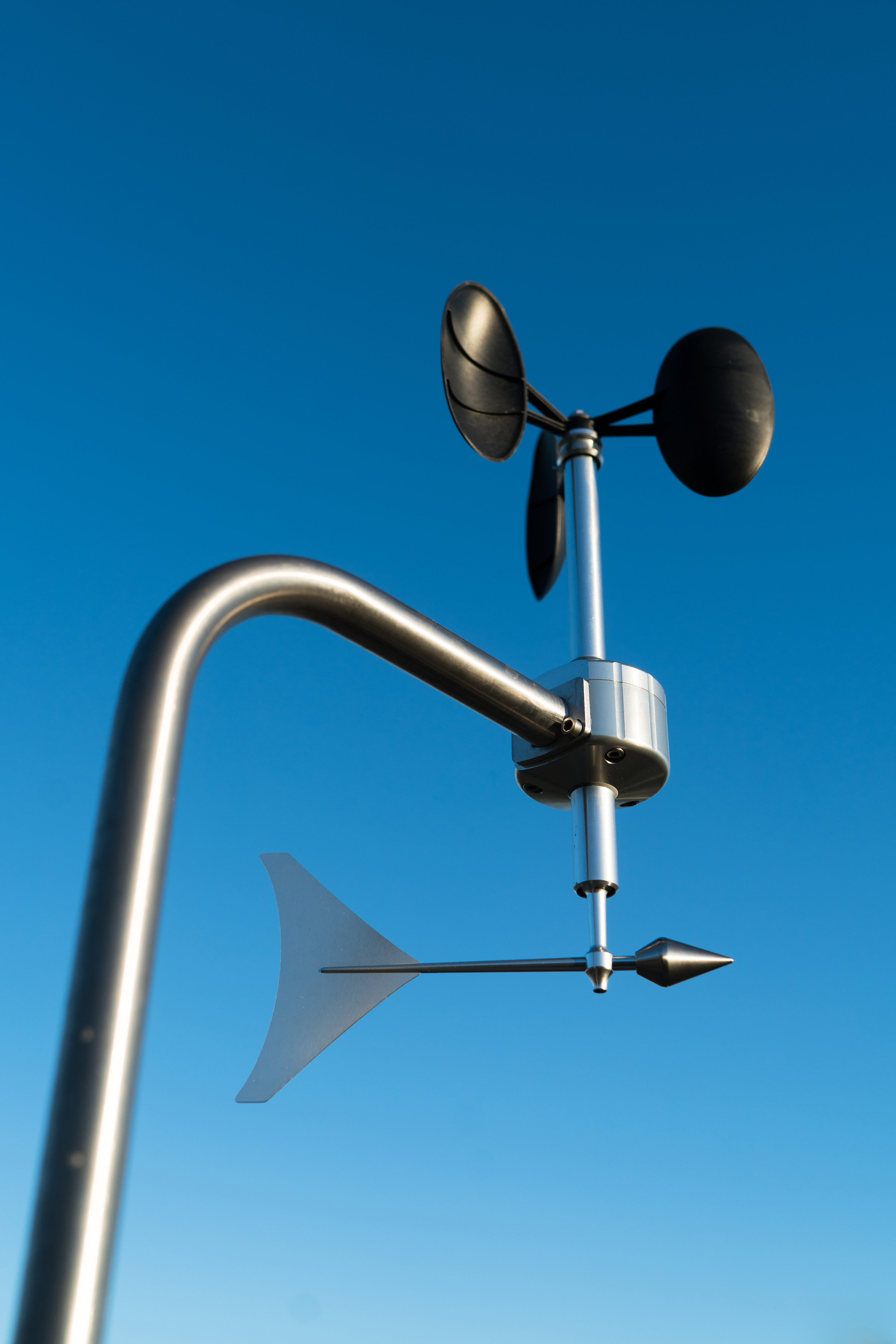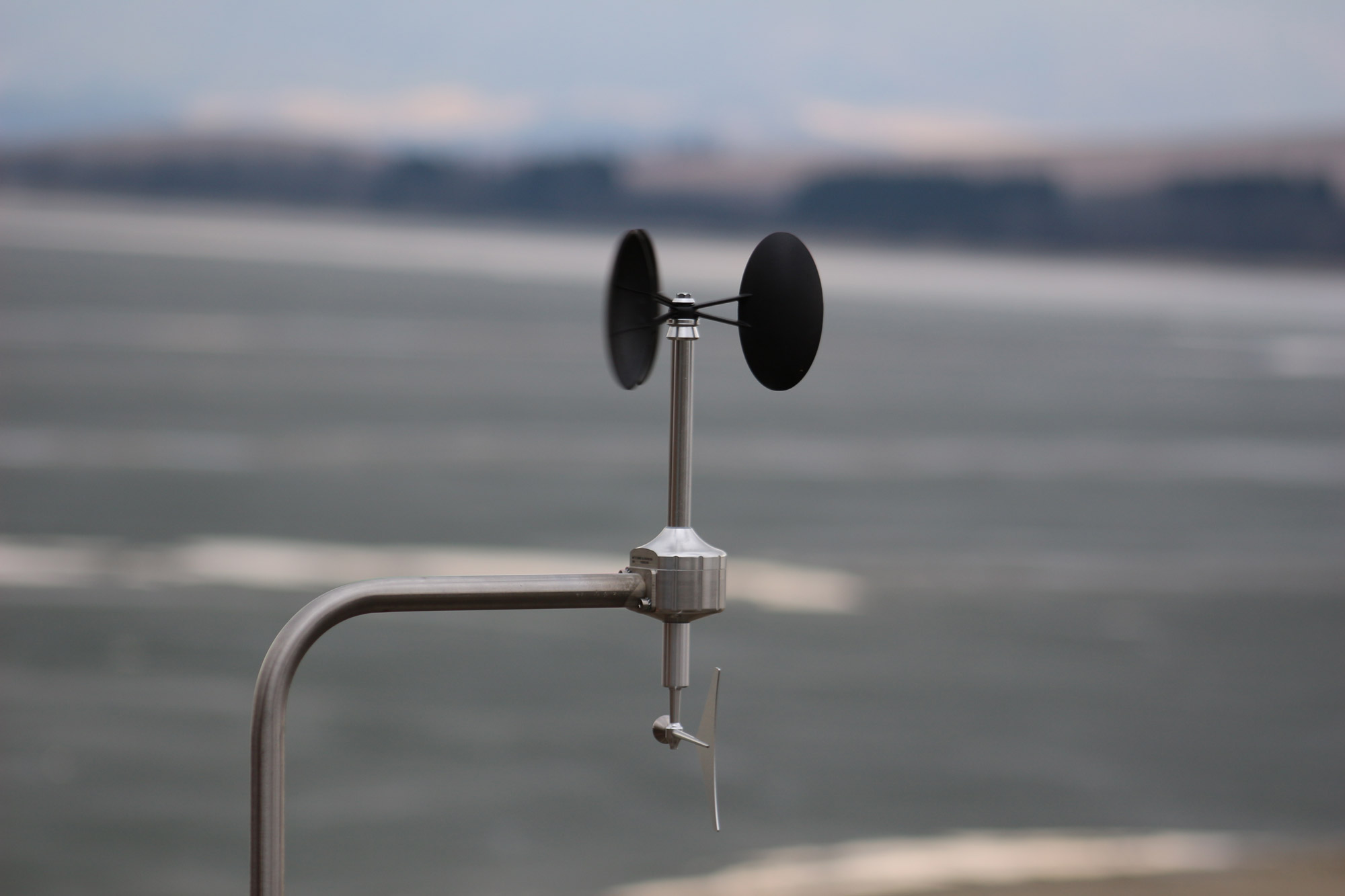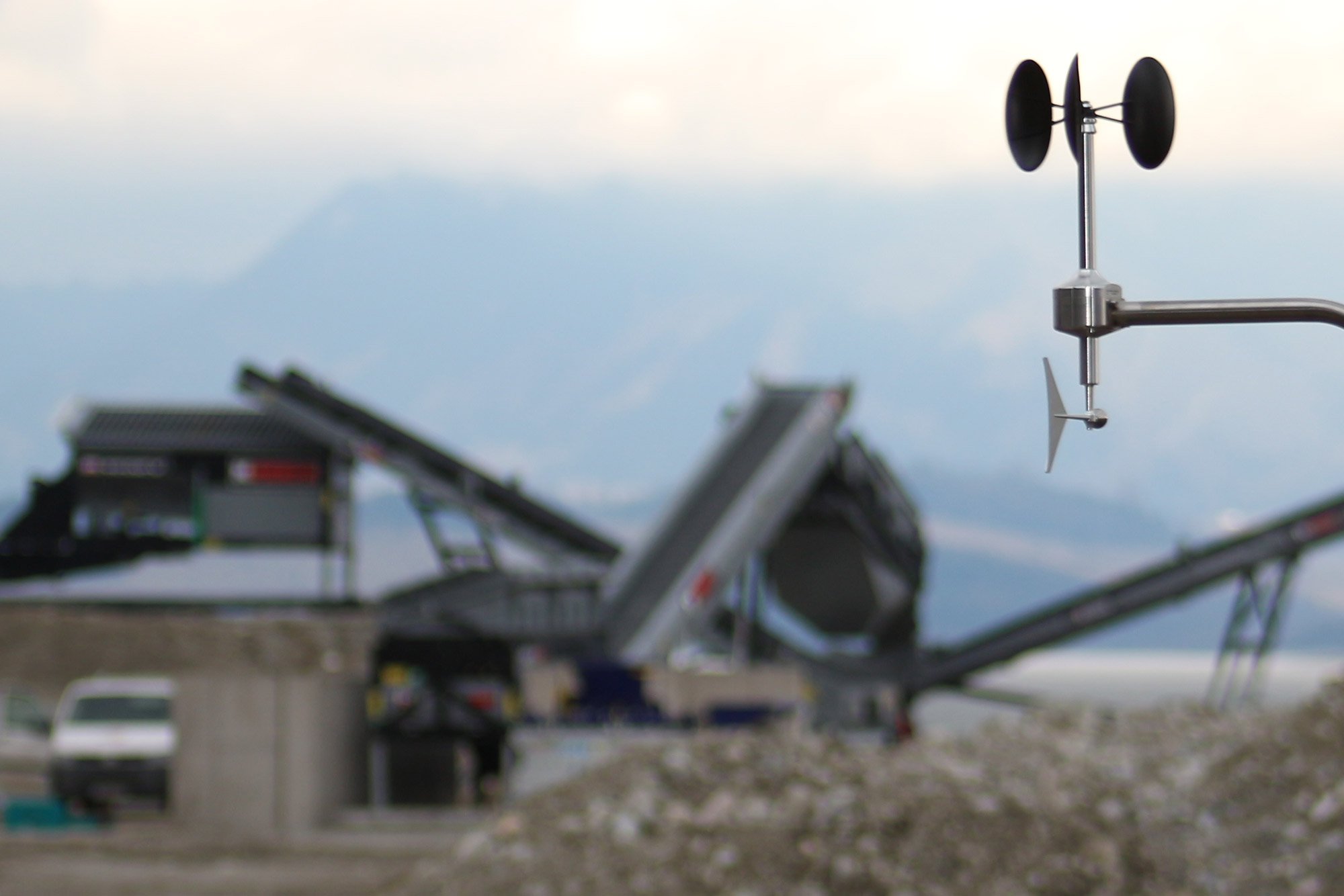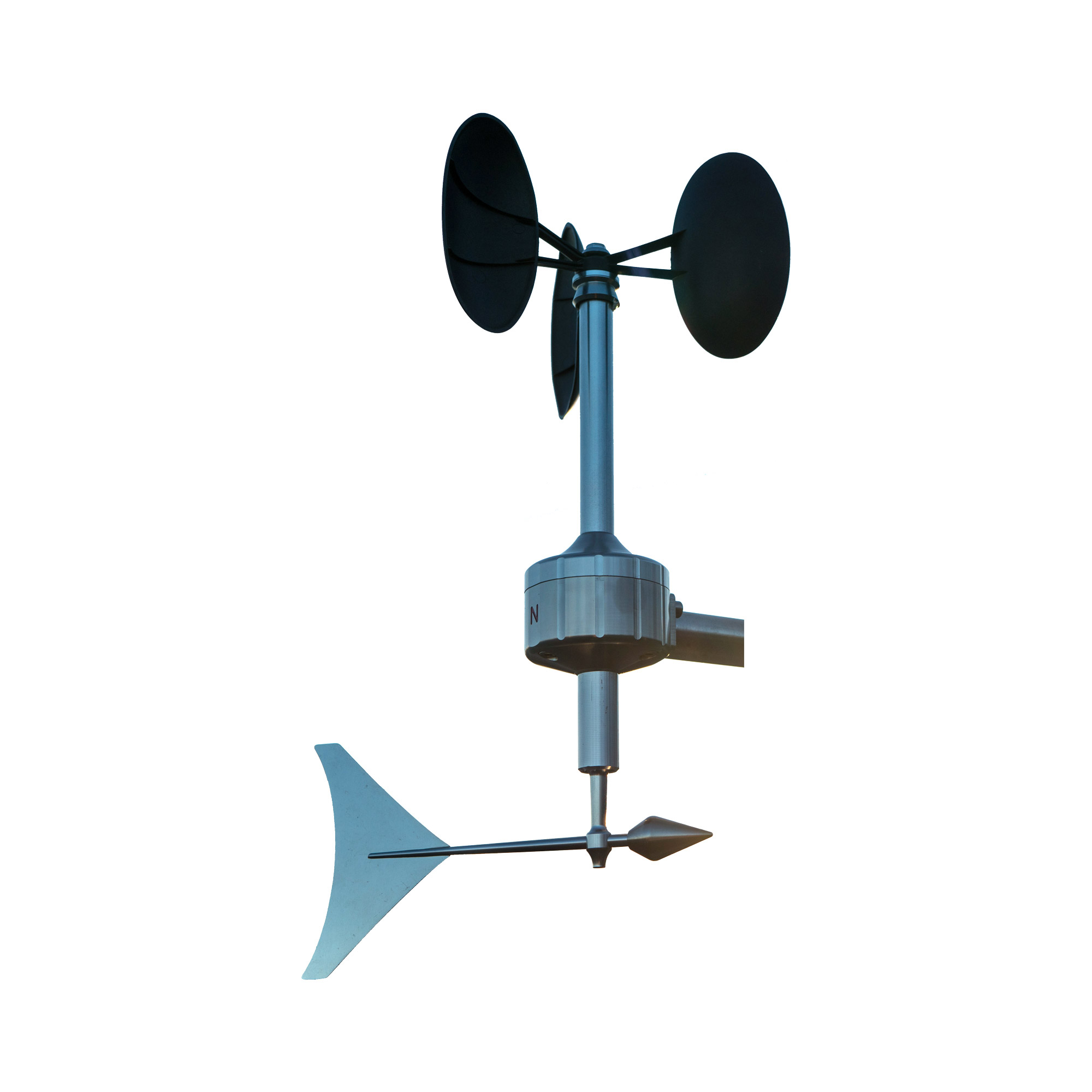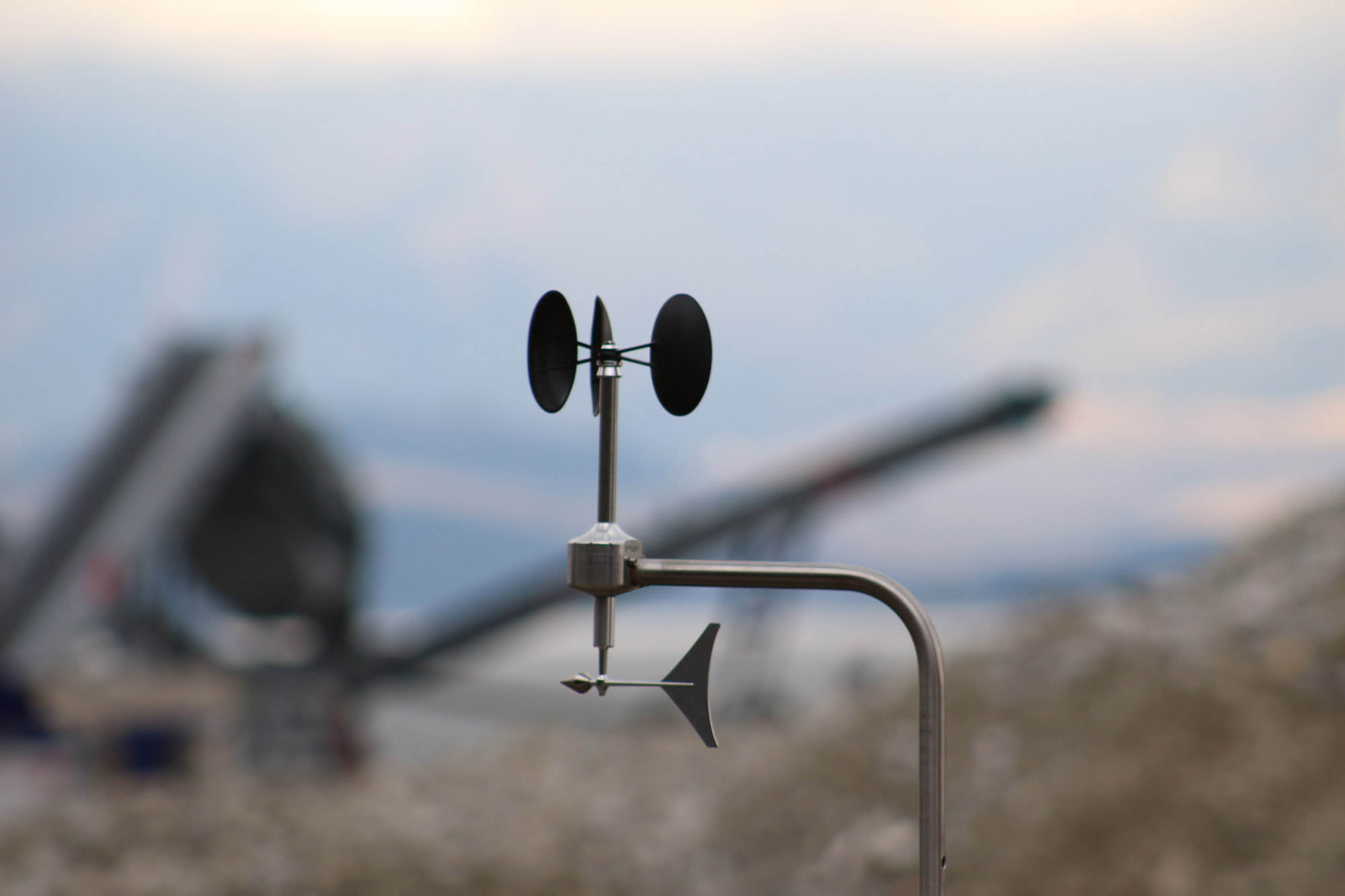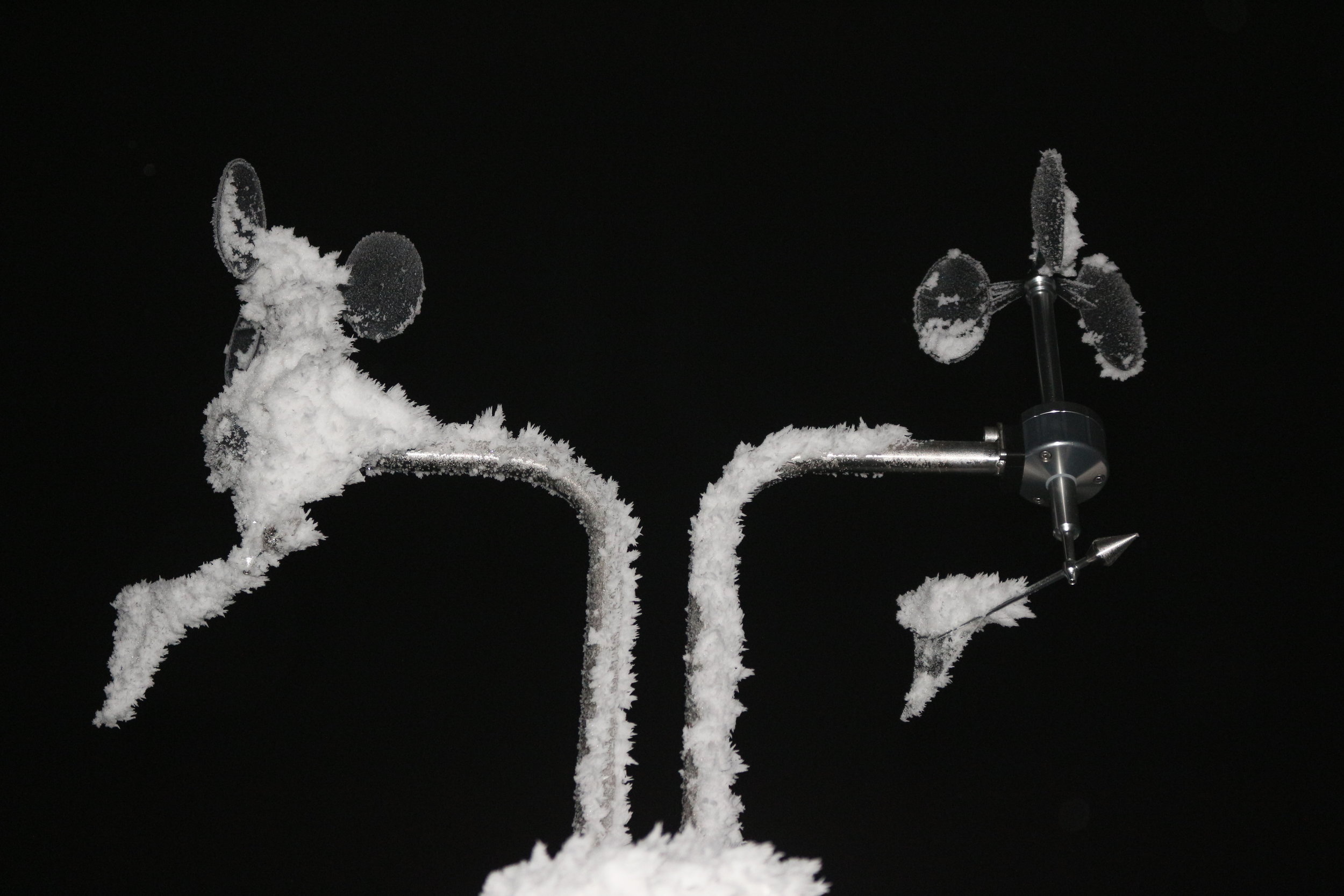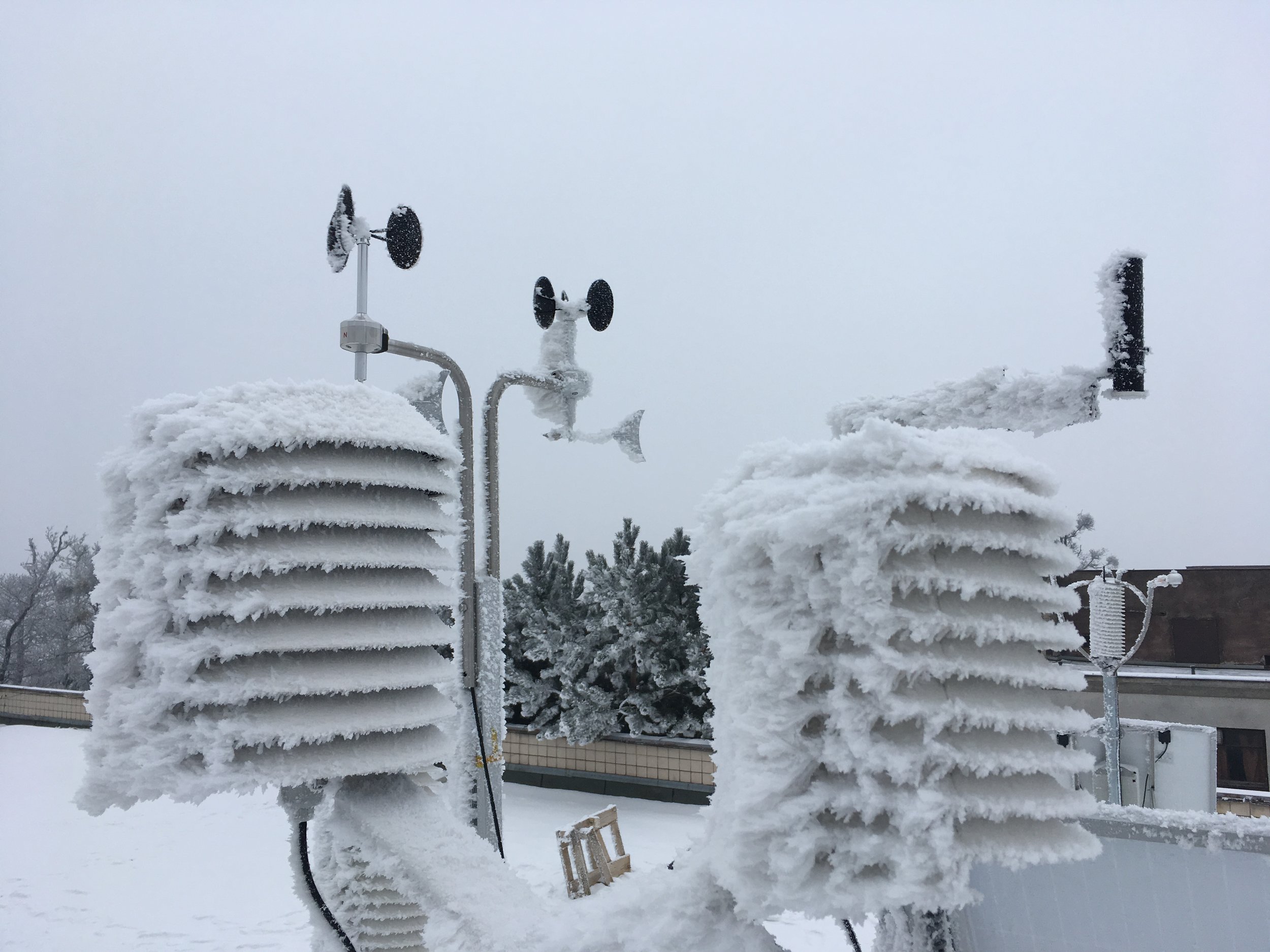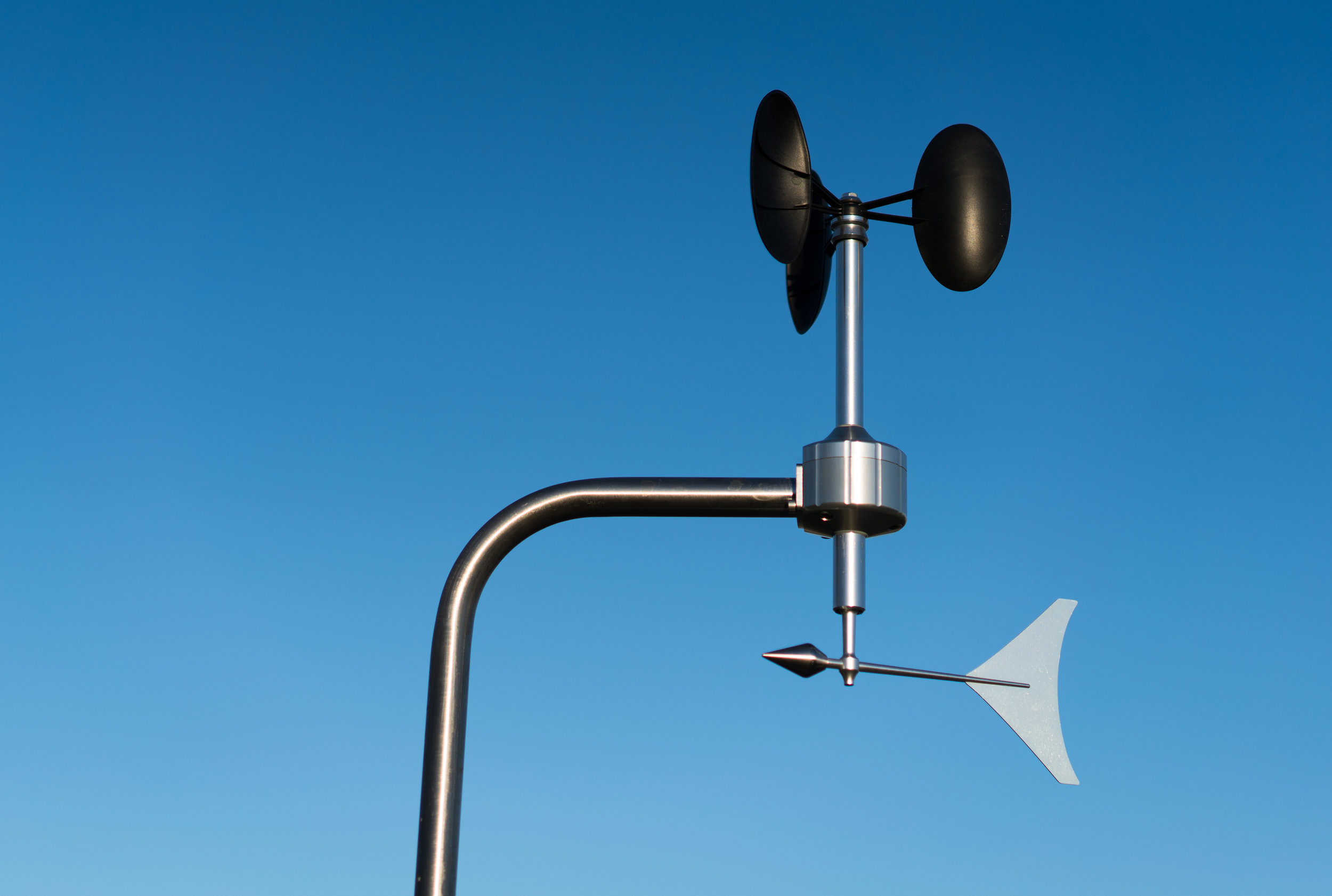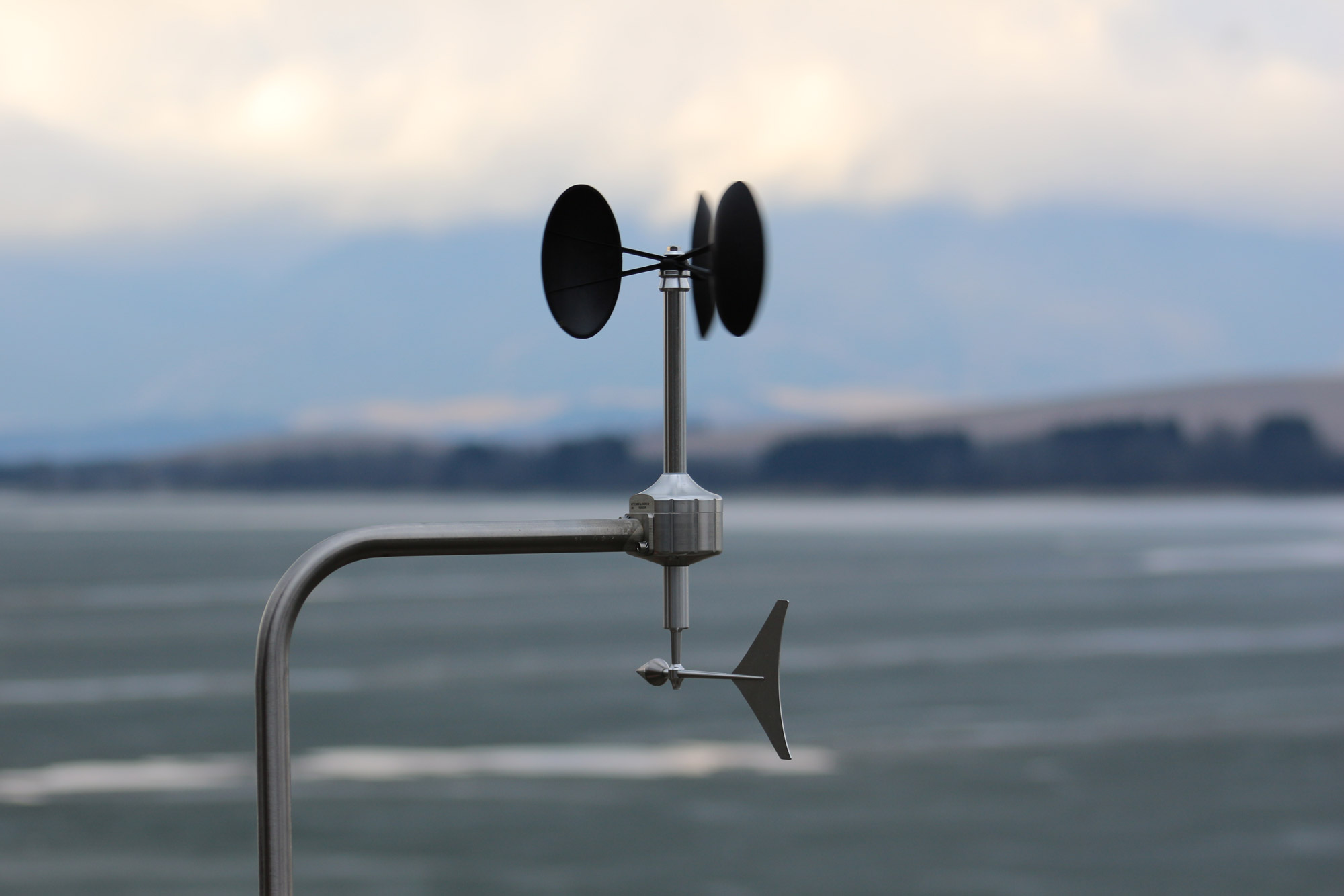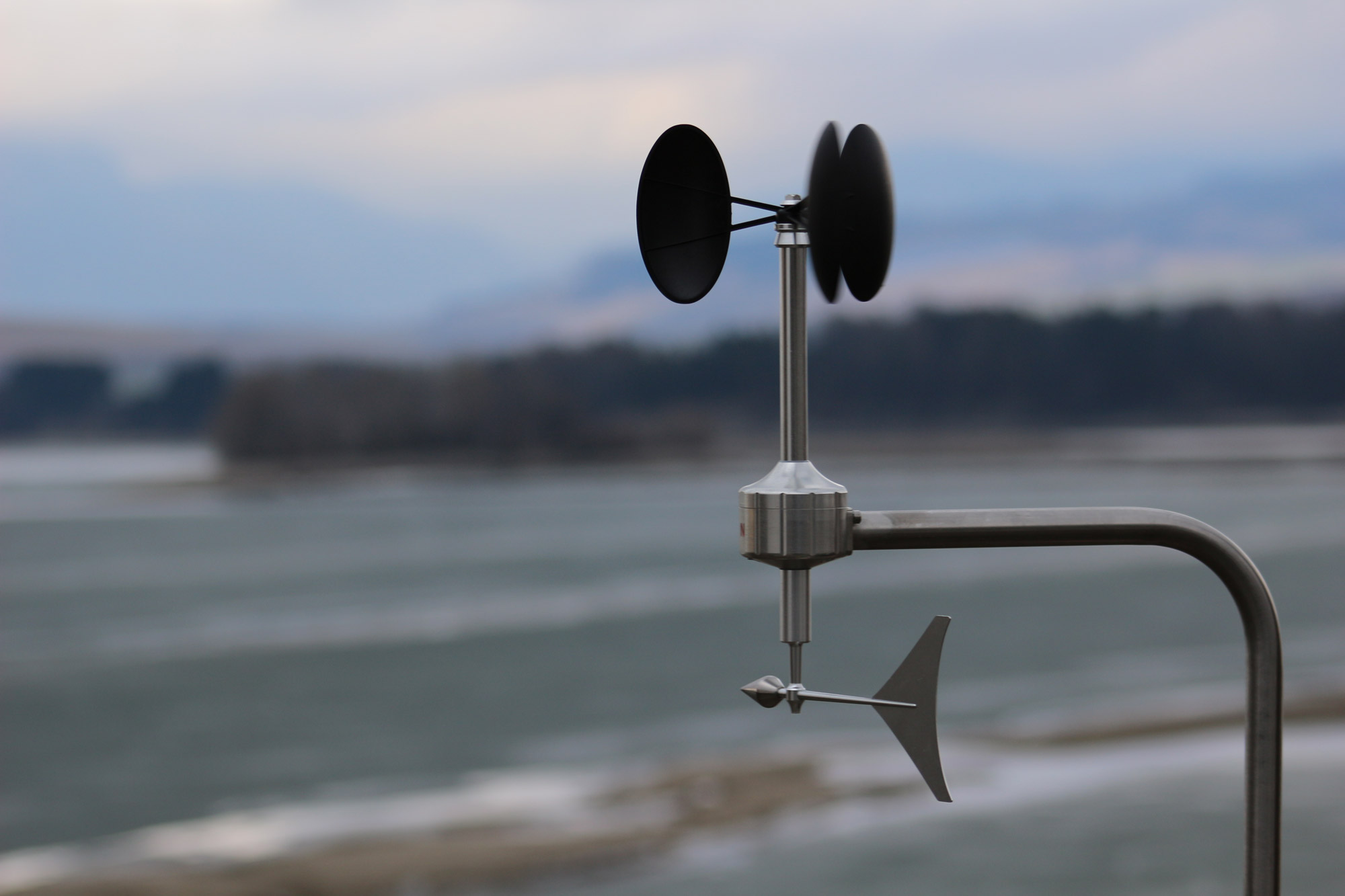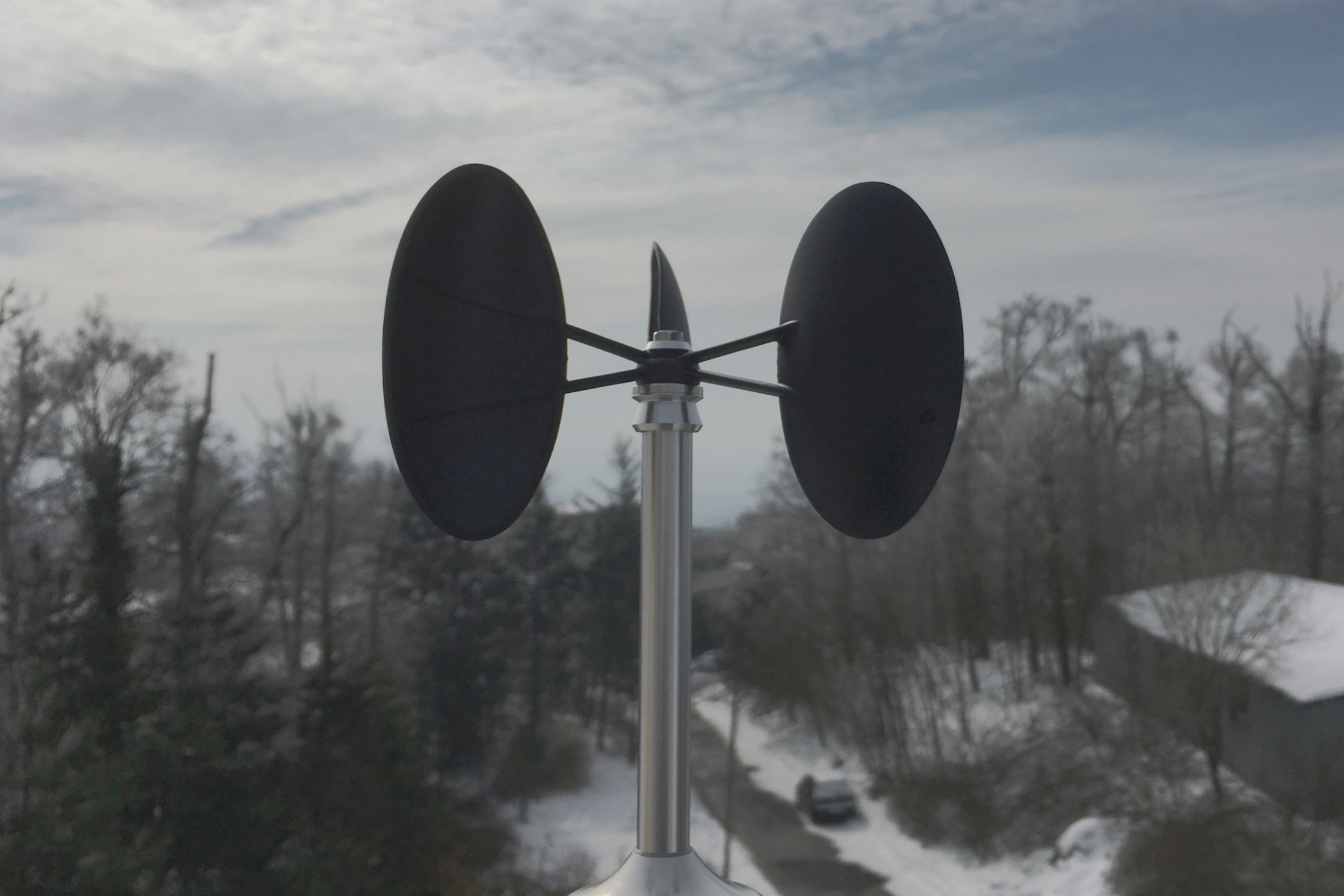Simplify your wind logging with the most compact 1st Class anemometer and wind vane
Elliptic cups create more torque & high linearity for improved data consistency vs. conical cups over a wide range of weather conditions. Very low start speeds, fast response and accurate long-term wind data are their inherent benefits.
Elliptical cups offer a larger wind blown area than circular cups for higher torque and low start speeds. They are also flatter than conical cups for superb off-axis response and reduces effects of rain and snow on anemometer linearity. These benefits of elliptic cups also offer superb linearity, not before possible in such a compact anemometer.
Very low starting wind speed for such a compact anemometer
Excellent linearity and accuracy exceeding MEASNET requirements
Excellent off-axis response. Low distance constant
Flat elliptic cups are more resistant to snow buildup
MODBUS communication Quick Start Guide and Starter Kit info for simple digital sensor integration:
UNIQUE FEATURES & BENEFITS
Compact sensor exceeds accuracy of MEASNET
MEASNET linearity and angular response has never been this compact. Elliptic cups allow MeteoWind 2 to shine in all-weather.
Single point wind speed and wind direction data compared to separate anemometer wind vane installations means that wind data quality has never been so good.
Winter road maintenace weather stations
Developed and proven road weather applications, MeteoWind 2 is able to survive.
Increase data quality with single point measurement
High quality single point wind speed and wind direction data. Increase your data quality & reduce your uncertainty to manageable levels. Reduce your data analysis time. Get MEASNET precision in one compact instrument. Reduce your installation time or double your wind speed and wind direction data density and reliability.
All weather reliability
Featuring oversize bearings with heating and triple-level lightning, EMI, ESD and surge protection for reliable operation in all-weather. Tough anodized aluminum corrosion resistant body with fiber reinforced plastic (FRP) cups ands additional robustness. Flat elliptical cups and bearing heating significantly reduce snow & ice buildup in extreme weather compared to conical and circular cup anemometers and allow MeteoWind 2 to maintain accuracy.
Optimize installation efficiency and reliability.
Install one sensor instead two (separate wind vane & anemometer) for wind resource assessment. Reduce your wiring. Comes with 3-stage lightning protection. IP67 connector protected in a stainless steel Ø20 mm side mount. Remotely adjustable north for easy installation. Serviceable rotor cups & bearing.
Airport certified. Renewable energy precise & reliable
Certified for aviation use per ICAO & WMO guidelines. Obtain high quality wind speed and wind direction data in all-weather with protection from lightning and field serviceability. Wind speed accuracy and dirt resistance of MeteoWind 2 also permits very long maintenance intervals while meeting WMO requirements.
WHY ELLIPTIC CUPS ARE BETTER
Elliptical cup shape
Patented elliptical design offers a larger wind blown area than circular and conical cups for higher aerodynamic torque to overcome bearing friction. Result is more consistent anemometer response throughout the complete air temperature range.
Benefits
- Low starting speeds
- Long-term dirt, dust and sand resistance created by the use of larger bearings which offer long-term measurement stability not effected by dirt
- Reduces effects of rain and snow on anemometer linearity
Elliptical cup cross-section
Aerodynamic stability in all-weather and throughout the complete wind speed range is a result of the elliptical cup cross section. Elliptical cup cross section is a very stable aerodynamic shape.
Benefits
- High full-scale linearity throughout the whole wind speed range
- Rain and dirt buildup on cups have minimal influence on measurement stability
- Flat elliptic cups reduce ability for snow buildup on anemometer cups
- Superb off-axis response for reliable data in turbulent environments
The positive aerodynamic properties of elliptic cups enabled us to make MeteoWind 2, the most compact anemometer to meet the strict MEASNET linearity requirements.
Strong and durable
Compact and responsive all-metal wind direction vane with superb response rate and good aerodynamic damping prevents overshoots to reduce wind direction data noise. Sitting on oversize ball beatings, the design balances rotational inertia with aerodynamic efficiency resulting in a compact and accurate wind direction vane.
Benefits
- Fast response matched to anemometer response
- Low starting wind speed <0.2 m/s
- Long-term dirt, dust and sand resistance created by the use of two oversize bearings for long-term measurement stability and strength
- All-metal construction for strength and long life
Aerodynamically stable body
Strong and durable anodized aluminum body creates a robust platform for mounting. Body shape and circumferential grooves contribute to the anemometer's full-scale linearity and accuracy, while a bayonet connector with IP67 rating down to -40 °C provides reliable connections.
Benefits
- All-metal construction for stability, strength and long product life
- IP67 connector for winter operation down to -40 °C
- Compact body allows for a efficient heating of ball bearings and body
- Body shape and features contribute to the anemometer's MEASNET & WMO accuracy
LIGHTNING PROTECTION
Advanced lightning protection comes standard
Highest class 3-stage lightning protection consisting of:
- high-over voltage protection
- high speed over-current protection
- high speed voltage protection
Lightning protection meets the following international standards for industrial equipment safety:
- EMC Emissions according to EN50081-1 / IEC61000-6-1
- EMI Transients according to EN50081-1 / IEC61000-6-2
- SURGE test 4 kV / 2 kA acc.to EN50082-2 / IEC61000-6-2
- ESD 15000 V (15 kV)
The use of 3-stage lightning protection is complemented by the RS-485 digital output which has inherently high resistance to interference and is therefore most widely used communication interface in tough industrial environments. Together, they are able to ground out any unwanted electrical interference from wired connections.
HEATED ANEMOMETER
Heated MeteoWind 2 adds body and ball bearing heating to the already robust MeteoWind 2 anemometer with wind vane.
Heater generates a generous 20 W on 24 V or 5 W on 12 V. For wireless weather stations, the heater includes automatic switching with the following user selectable settings:
- Heater OFF
- Heater ON, controlled by temperature
- Heater ON, controlled by temperature and activates only when wind speed reading is less than 2 m/s. Once activated, heating cycle runs until completed
The photo clearly shows how anemometer heating can benefit data reliability in tough winter climates. While it does not completely eliminate ice buildup on the anemometer cups and wind vane, it significantly reduces the icing effects and prevents the anemometer and vane from completely icing up.
OVERVIEW & TECHNICAL FEATURES
Combined sensor advantage
- Two instruments for the price of one
- Lower power requirements than two separate instruments
- One sensor, one mount - simpler than two mounts for two sensors (anemometer & wind vane)
- Less cable, less connections & less electronics equals higher reliability
1st Class measurement
- MEASNET linearity and accuracy
- Very low starting speed
- Very low distance constant with minimal over speeding
- Exceeds 1st Class anemometer requirements for wind energy applications
Heated for reliability in winter
- Available with a 20 W heater for cold winter climates
- Heat is distributed between the anemometer bearing and sensor body
Technical features
- Rugged all-metal anodized aluminum housing and metal wind vane
- Tough fiber reinforced cups from FRP material
- Oversize ball bearings for long life, dirt resistance and durability
- Corrosion resistant anodized aluminum body
- Bayonet locking waterproof connector with Silicone o-rings for operation in low -40 °C and high -80 °C temperatures
- Versatile sensor communication interface:
- RS-485
- MODBU S ASCII and MODBUS RTU
- Pulse (square wave) wind speed output coming soon in 2018
- 0-2.5 V wind direction analog output coming soon in 2018
Offering MEASNET accuracy in a combined wind sensor designed for wind resource assessment studies and professional weather station use. Featuring reduced cost of ownership and higher reliability compared to separate wind vane & anemometer installations. MeteoWind 2 significantly exceeds WMO accuracy requirements, thus offering long service intervals and long-term economic benefits for weather station use.


